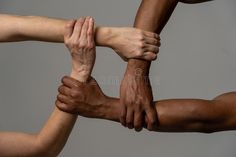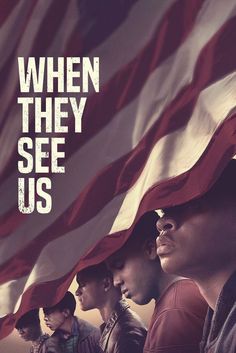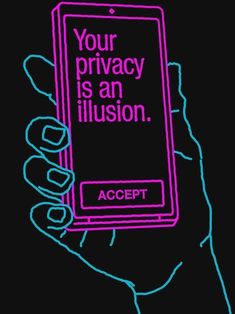1. Topic: Racism and stereotypes in the film industry
“When the 2016 Oscar acting nominations all went to whites for the second consecutive year, #OscarsSoWhite became a trending topic. Yet these enduring racial biases afflict not only the
Academy Awards, but also Hollywood as a whole. Why do actors of color, despite exhibiting talent and bankability, continue to lag behind white actors in presence and prominence?” (Yuen, 2016)
Given that the emergence of cinema coincided with the zenith of European imperialism, it‘s not
surprising that European cinema often depicted colonized people in a negative and stereotypical
manner. In fact, many of the misconceptions about people from the Third World can be traced back to the persistent portrayal of lazy Mexicans, deceitful Arabs, savage Africans, and exotic Asians on our movie screens. For instance, Africa was often depicted as a place inhabited by cannibals in films like ‚Rastus in Zululand‘ (1910), Mexicans were often reduced to ‚greasers‘ in movies such as ‚Tony the Greaser‘ (1911) and ‚The Greaser‘s Revenge‘ (1914), and the institution of slavery was romanticized while slaves were dehumanized in ‚The Birth of a Nation‘ (1915). Additionally, countless Hollywood westerns distorted history by portraying Native Americans as intruders on their own land, offering a skewed perspective that extended to the entire non-white world. (cf. Stam & Spence, 1983, S.6)
This leads to the consumers of these formats absorbing and spreading these false stereotypes, which can lead to further racism. To avoid this, it is important that false role models and prejudices are abolished in the future.
Due to the circumstance that popular culture continually transforms itself, often presenting itself as innovative, it is essential to have a historical awareness of these concepts and representations. This understanding is vital for unraveling their persistence in contemporary times, as they tend to be more of a reinterpretation of deeply ingrained ideologies rather than entirely new creations.
(cf. Dirks & Mueller, 2007, S.116)
Bibliography:
Yuen, N. W. (2016). Reel inequality: Hollywood actors and racism. https://digitalcommons.biola.edu/faculty-books/109/
Stam, R. & Spence, L. (1983). Colonialism, racism and representation. Screen, 24(2), 2–20. https://doi.org/10.1093/screen/24.2.2
Dirks, D. & Mueller, J. C. (2007). Racism and popular culture. In Springer eBooks (S. 115–129). https://doi.org/10.1007/978-0-387-70845-4_8
Jha, M. (2015). The global beauty industry: colorism, racism, and the national body. https://openlibrary.org/books/OL28827904M/Global_Beauty_Industry
Eglash, R. (2002). Race, Sex, and Nerds: From Black Geeks to Asian American Hipsters. Social Text 20(2), 49-64. https://www.muse.jhu.edu/article/31927.







2. Topic: Street photography as a method of exploring new environments.
A Videographic Documentation Approach of a
Photographic Exploration Method in New Habitats.
The aim is to find out how the perception of new environments affects the artistic output of a street photographer and how this can be changed.
The aim is to find out whether street photography can help to find one‘s way in new environments and whether a different form of tourist exploration emerges through this art form.
Street photography is not purely useable for documentary or photojournalistic. This art also requires the ability to notice and pay attention to your surroundings. You always have to be curious and ready to capture the brief moments which inhabit the true unique of every place. (cf. Lewis, 2015)
The practical work here will be a videographic documentation of a photographer‘s exploration process of a new habitat. This process will be compared with classic tourists exploring the same environment and examined for differences and similarities.
“An exploration of the many different appropriations of public spaces for photography shows that walking in city streets has not only been a central subject for fine art photography; it also has been one of its primary historical conditions.”(Tucker, 2012, S.7)
Bibliography:
Tucker, J. (2012). Eye on the Street: Photography in Urban Public Spaces. Radical History Review, 7., https://doi.org/10.1215/01636545-1597979
Lewis, G. (2015). Street Photography: The Art of Capturing the Candid Moment. Rocky Nook, Inc. https://www.google.at/books/edition/Street_Photography/NRukBwAAQBAJ?hl=de&gbpv=1&dq=Street+Photography:+The+Art+of+Capturing+the+Candid+Moment.&printsec=frontcover
Cuador, C. (2017). From street photography to face recognition: distinguishing between the right to be seen and the right to be recognized. Nova Law Review, 41(2), 3. https://nsuworks.nova.edu/cgi/viewcontent.cgi?article=1998 HYPERLINK „https://nsuworks.nova.edu/cgi/viewcontent.cgi?article=1998&context=nlr“& HYPERLINK „https://nsuworks.nova.edu/cgi/viewcontent.cgi?article=1998&context=nlr“context=nlr
David Blumenkrantz (2009) Street Photography: A Bridge Between Documentary and Art, Visual Communication Quarterly, 16:2, 108-116, DOI: 10.1080/15551390902803846
Lindner, C., & Meissner, M. (2015). Slow Art in the Creative City: Amsterdam, Street Photography, and Urban Renewal. Space and Culture, 18(1), 4-24. https://doi.org/10.1177/1206331213509914




3. Topic: Changing perceptions of video formats through the development of social media. About attention span and content change.
In an era dominated by scrolling feeds and viral trends, the influence of social media on videos has been nothing short of revolutionary. The goal here would be a exploration of the profound impact of platforms like TikTok, Instagram, and YouTube on the way we consume motion pictures, altering our perception of storytelling and challenging our attention spans like never before.
„As of July 2023, there were 5.19 billion internet users worldwide, which amounted to 64.6 percent of the global population. Of this total, 4.88 billion, or 59.9 percent of the world‘s population, were social media users.“ (Internet and Social media Users in the World 2023 | Statista, 2023)
In 2016, video content usage by marketers surged, with over 60% of them incorporating videos into their strategies, and 73% reported an increased focus on video in social media marketing. Marketers also recognized video as a more potent conversion tool compared to other content formats. These trends highlight video‘s marketing potential on social media but also underscore the challenge of engaging viewers and maintaining their attention in the fast-paced digital landscape.
(cf. Coker et al. 2017, S.75)
These figures show that this issue is more important than ever, as it affects more and more people.
The questions that arise are:
How does the excessive use of social media affect the perception of moving image content?
How do the ever-shortening formats affect attention spans?
How is it possible to generate successful content that does not negatively influence the perception of consumers?
How has social media changed the form of storytelling?
Bibliography:
Internet and Social media Users in the World 2023 | Statista. (2023, 22. September). Statista. https://www.statista.com/statistics/617136/digital-population-worldwide/
Coker, K., Flight, R. & Baima, D. (2017). SKIP IT OR VIEW IT: THE ROLE OF VIDEO STORYTELLING IN SOCIAL MEDIA MARKETING. https://www.researchgate.net/. Abgerufen am 5. Oktober 2023, von https://www.researchgate.net/profile/Richard-Flight/publication/327755028_Skip_it_or_View_it_The_Role_of_Video_Storytelling_in_Social_Media_Marketing/links/60c7ad2a458515dcee8f02c5/Skip-it-or-View-it-The-Role-of-Video-Storytelling-in-Social-Media-Marketing.pdf
Zhao, X., Lampe.C. & Ellison. N., (2016). The Social Media Ecology: User Perceptions, Strategies and Challenges. In Proceedings of the 2016 CHI Conference on Human Factors in Computing Systems (CHI ‚16). Association for Computing Machinery, New York, NY, USA, 89–100. https://doi.org/10.1145/2858036.2858333
Watkins , I., Golbeck, J. & Huang, M., (2012) Understanding and Changing Older Adults‘ Perceptions and Learning of Social Media, Educational Gerontology, 38:4, 282-296, DOI: 10.1080/03601277.2010.544580
Ardèvol-Abreu, A., & Gil de Zúñiga, H. (2017). Effects of Editorial Media Bias Perception and Media Trust on the Use of Traditional, Citizen, and Social Media News. Journalism & Mass Communication Quarterly, 94(3), 703-724. https://doi.org/10.1177/1077699016654684





